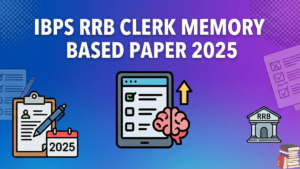The Reasoning Ability section of the Union Bank SO exam plays a crucial role in determining overall performance. It includes topics like Seating Arrangements, Puzzles, Inequalities, and more, each carrying varying weightage. To score well, candidates must adopt a topic-wise approach and focus on high-weightage question types commonly seen in the exam. This guide presents a clear strategy for each topic along with key question patterns to help streamline your preparation.
A Topic-Wise Strategy of Reasoning Ability for UBI SO
The Reasoning Ability section of the Union Bank SO exam is designed to test your analytical and problem-solving skills. To excel in this crucial section, a strategic approach focusing on individual topics is key. Let’s delve into a topic-wise strategy to help you navigate and conquer each area effectively.
Seating Arrangements:
Concept: These questions involve arranging individuals or objects based on given conditions (linear, circular, etc.).
Strategy:
- Visualize: Draw the layout (line, circle, square) as described.
- Identify Definite Information: Start with direct statements to place individuals/objects.
- Handle Conditional Information: Note down the “if-then” scenarios and use them as constraints.
- Eliminate Possibilities: If a placement contradicts a given condition, discard that arrangement.
- Practice Different Types: Solve linear, circular (facing center, facing outward, both), and complex arrangements.
Puzzles:
Concept: Puzzles present a set of information, and you need to deduce relationships and answer questions based on them. These can involve professions, colors, ages, etc.
Strategy:
- Tabular Representation: Create tables to organize the given data. This helps in visualizing the connections.
- Break Down Information: Address each piece of information systematically.
- Look for Direct Links: Identify statements that directly link two or more elements.
- Consider All Possibilities (Initially): If there’s ambiguity, explore different scenarios until contradictions arise.
- Practice Variety: Solve different types of puzzles (floor-based, box-based, scheduling, etc.).
Inequalities:
Concept: These questions involve determining the relationship (,<,=,≥,≤) between variables based on given statements.
Strategy:
- Understand Basic Symbols: Be clear about the meaning of each inequality symbol.
- Direct Comparison: If variables are directly linked in a statement, the relationship is straightforward.
- Transitive Property: Use the transitive property (if A>B and B>C, then A>C) to deduce relationships.
- Combine Statements: If multiple statements are given, combine them to find the overall relationship.
- “Either-Or” Cases: Be mindful of situations where either one of the conclusions or the other must be true.
Syllogism:
Concept: Syllogisms involve logical deductions from given statements (premises) to conclusions.
Strategy:
- Venn Diagrams: The most effective method is to represent the statements using Venn diagrams.
- Identify Universal and Existential Statements: Understand “All,” “No,” and “Some” quantifiers.
- Check for Validity: A conclusion is valid only if it necessarily follows from the premises.
- Avoid Personal Bias: Do not let your real-world knowledge influence your judgment. Focus solely on the given statements.
Input-Output:
Concept: You are given an input and a series of steps that transform it into an output. You need to identify the pattern and apply it to a new input.
Strategy:
- Analyze Each Step: Carefully observe the changes occurring at each step (arrangement, operation).
- Identify the Rule: Determine the logic behind the transformation (e.g., alphabetical order, numerical operations, shifting).
- Work Backwards (If Needed): Sometimes, analyzing from the output to the input can be helpful.
- Focus on Position and Value: Note how the position and value of elements change.

Data Sufficiency:
Concept: You are given a question followed by two or more statements. You need to determine which statement(s) alone or together are sufficient to answer the question.
Strategy:
- Analyze the Question: Understand exactly what needs to be determined.
- Evaluate Each Statement Individually: Check if each statement alone provides enough information.
- Combine Statements (If Necessary): If individual statements are insufficient, see if combining them provides the answer.
- Don’t Solve Completely: You only need to determine sufficiency, not find the actual answer.
Blood Relations:
Concept: These questions test your ability to understand and interpret family relationships.
Strategy:
- Draw Family Trees: Represent the relationships using a clear diagram (circles for females, squares for males, lines for connections).
- Use Standard Notations: Adopt consistent symbols for different relationships (e.g., +, – for gender, horizontal line for siblings, vertical line for parent-child).
- Break Down Complex Relationships: Address the relationships step by step.
Coding Decoding:
Concept: You are given a word or number coded in a particular way, and you need to decipher the code and apply it to a new word or number.
Strategy:
- Letter to Letter/Number: Look for direct letter-to-letter or letter-to-number correspondences.
- Positional Changes: Observe if letters are shifted, reversed, or their positions are altered.
- Common Patterns: Be aware of common coding patterns like alphabetical order, reverse alphabetical order, and specific numerical operations.
Order and Ranking:
Concept: These questions involve determining the position or rank of individuals based on given comparisons.
Strategy:
- Linear Arrangement: Visualize the individuals in a line based on the given order.
- Focus on Comparative Statements: Pay attention to “taller than,” “shorter than,” “ranked above,” etc.
- Deduce Positions: Combine the given information to determine the relative positions.
Coded Distance and Direction:
Concept: These questions involve following directions and distances that are given in a coded format.
Strategy:
- Decode the Symbols: First, decipher what each symbol represents (direction and distance).
- Draw a Diagram: Sketch the movement based on the decoded information.
- Use Cardinal Directions: Keep track of North, South, East, and West.
- Apply Pythagorean Theorem (If Necessary): For finding the shortest distance between two points.
Logical Reasoning:
Concept: This section often includes questions on arguments, assumptions, inferences, and drawing conclusions.
Strategy:
- Understand the Question Type: Identify whether you need to find an assumption, inference, argument, or conclusion.
- Focus on the Given Information: Do not bring in outside knowledge.
- Identify Key Phrases: Look for words like “therefore,” “because,” “if,” “unless.”
- Practice Different Question Formats: Familiarize yourself with various types of logical reasoning questions.
Union Bank SO Reasoning Ability: High-Weightage Questions
Directions (01-05): Study the following information carefully and answer the given questions:
Twelve persons- J, K, L, M, N, O, P, Q, R, S, T and U are living in the six-floor building (but not necessarily in the same order). The ground floor is numbered as 1, the floor just above it is numbered as 2 and so on. Each floor has 2 flats in it i.e., Flat X and Flat Y. Flat X of floor 2 is immediately above flat X of floor 1
and immediately below flat X of Floor 3. Flat Y of Floor 2 is immediately above flat Y of floor 1 and immediately below flat Y of Floor 3. Flat X is exactly to the west of Flat Y. M lives on an even number floor but not in flat X. Two floors are there between the floor on which M and K lives. K doesn’t live in flat Y. O lives immediately above K in the same named flat. O lives southwest of J who lives below M. Q lives immediately above S in the same named flat. S doesn’t live on first and fifth floor. T lives west of U and northwest of N. Neither U nor N lives above J. R lives on the floor immediately above L.
Q01. In which among the following floor does O lives?
(a) Second floor
(b) First Floor
(c) Either first or third floor
(d) Fourth floor
(e) None of these
Q02. Who among the following person lives in flat X on the third floor?
(a) S
(b) The person who lives northwest of J.
(c) The person who lives exactly to the west of S.
(d) T
(e) None of these
Q03. Who lives immediately above S in the same named flat?
(a) One who lives east of L
(b) O
(c) U
(d) M
(e) None of these
Q04. How many floors are there between the floors in which M and N live?
(a) One
(b) Two
(c) Three
(d) Four
(e) Either two or four
Q05. Who among the following person lives on sixth floor in Flat X?
(a) The one who lives immediately above J in the same named flat.
(b) L
(c) The one who lives to the west of M.
(d) O
(e) None of these
Directions (06-10): Study the following information carefully and answer the questions given below:
Eight persons sit in two parallel rows. A, B, C, and D sit in row 1 and facing south direction. P, Q, R, and S sit in row 2 and facing north direction. Persons in both rows are facing each other. Each of them has currencies of different countries i.e. Dinar, Won, Peso, Pound, Euro, Real, Yen and Dollar. C sits second to the right of the one who faces the one who has Won. Q neither has Dollar nor Dinar and sits second to the left of S. Q does not face immediate neighbours of C. One person sits between C and B who has Peso. The one who has Yen immediate neighbour of C and sits opposite to the one who has Euro. R sits second to the right of the one who has Euro. D does not sit opposite to R. The one who sits opposite to P sits second to the right of the one who has Real. Two persons sit between the one who has pound and the one who has Dollar.
Q06. Who among the following has Dinar?
(a) A
(b) C
(c) D
(d) P
(e) None of these
Q07. Who sits opposite to the one who has Dollar?
(a) The one who has Peso
(b) D
(c) C
(d) The one who has Real
(e) None of these
Q08. Who among the following sits diagonally opposite to R?
(a) A
(b) The one who has Dinar
(c) B
(d) The one who has Yen
(e) None of these
Q09. Four ofthe following five are alike in a certain way based on the given arrangement and thus form a group. Which of the following does not belong to that group?
(a) R
(b) Q
(c) A
(d) B
(e) C
Q10. Which of the following statement is false?
(a) C is not an immediate neighbour of A
(b) P does not sit opposite to B
(c) R does not have Pound
(d) D does not have Yen
(e) None of these
| Related Posts | |
| Union Bank SO Recruitment 2025 | Union Bank SO Previous Year Question Papers |
| Union Bank SO Syllabus | Union Bank SO Salary |




 IBPS RRB Clerk Prelims Exam Analysis 202...
IBPS RRB Clerk Prelims Exam Analysis 202...
 IBPS RRB Clerk Memory Based Paper 2025, ...
IBPS RRB Clerk Memory Based Paper 2025, ...
 IBPS RRB Clerk Expected Cut off 2025, Ch...
IBPS RRB Clerk Expected Cut off 2025, Ch...







